Publications

February 18, 2013
The goal of this study was to document the prevalence and correlates of any past year sibling victimization, including physical, property, and psychological victimization, by a co-residing juvenile sibling across the spectrum of childhood from one month to 17 years of age.
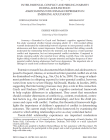
February 1, 2013
This study examined whether female emerging adults' recalled sibling warmth moderated the relationship between exposure to inter-parental conflict in adolescence and their current depression.

October 26, 2012
We describe sibling proactive and reactive aggression in middle and late adolescence. Participants were 8th and 12th grade adolescents who completed an in-school survey.
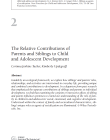
December 3, 2009
We explore how siblings' and parents' roles, relationships, and activities are intertwined in everyday life, providing unique and combined contributions to development.
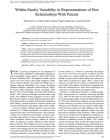
January 27, 2009
We examined within-family variation in siblings’ memories of experiences with parents and their associations with current positive and negative affect.
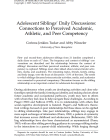
March 5, 2007
Adolescent siblings from 21 families completed a daily diary on each of 7 days. The frequency and content of siblings' conversations are described and the relationship between the content of siblings' discussion and their perceived academic, athletic, and peer competency is explored.

July 29, 2004
This study examined the implications of family time for firstborn and secondborn adolescent offspring, mothers, and fathers in 192 dual-earner families, defining family time as time shared by the foursome in activities across 7 days.

September 1, 2003
This study examined (a) sex differences in adolescents' conflict resolution with mothers, fathers, and siblings; (b) how adolescents' personal qualities and the nature of their family relationships relate to effective conflict resolution; and (c) the direct role of conflict resolution in adolescents' adjustment.
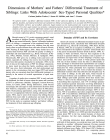
January 1, 2003
We explored mothers' and fathers' differential treatment (PDT) of their adolescent offspring in five domains (privileges, chores, affection, discipline, and temporal involvement) and examined how siblings' personal qualities were associated with PDT.
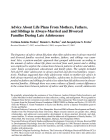
December 1, 2001
This publication examines the frequency of advice about life plans that older adolescents in always-married and divorced families received from mothers, fathers, and siblings.
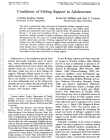
January 1, 2001
This study examined the nature and extent of adolescent siblings' supportive roles and the conditions under which siblings provide support to one another about familial and nonfamilial issues.
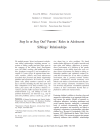
August 1, 2000
We studied parents' direct involvement in adolescent sibling relationships, including parents' reactions to sibling conflict and their time spent in the company of the sibling dyad.

May 1, 2000
We compared the extent of parents’ differential treatment (PDT) and girls’ and boys’ perceptions of parents’ fairness in middle childhood and adolescence as a function of the gender constellation of the sibling dyad.
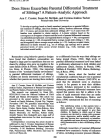
January 1, 1999
To develop a typology based on family members' perspectives on parental differential treatment of siblings, data from mothers, fathers, firstborn adolescent siblings, and second-born adolescent siblings from 187 families were analyzed.
